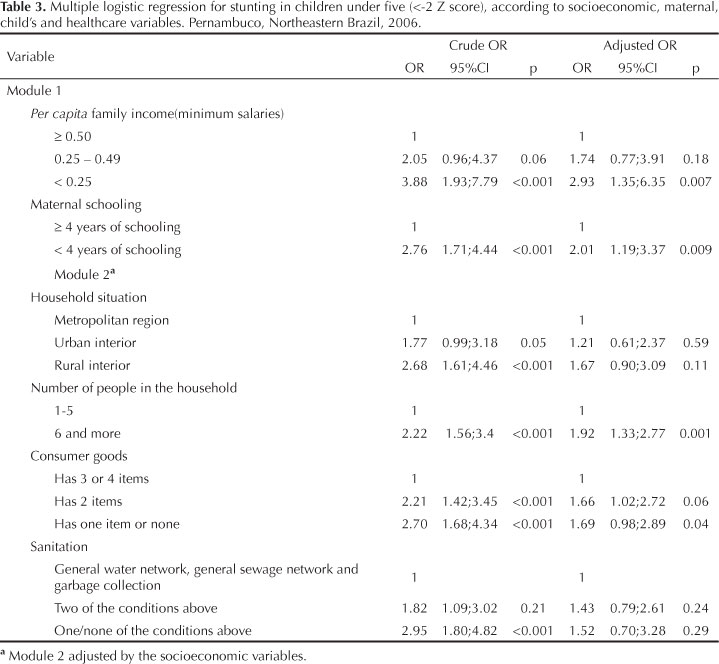OBJECTIVE: To describe the prevalence of stunting in children under five and identify factors associated. METHODS: Population-based cross-sectional study conducted in 1991, 1997 and 2006 in the state of Pernambuco, northeastern Brazil. The following variables associated with the prevalence of stunting (height-for-age < -2 z-score) were studied: socioeconomic condition, maternal and child characteristics, and health care provided. A hierarchical model was used in the multiple logistic regression to assess the impact of explanatory variables on children's stunting. RESULTS: The prevalence of child malnutrition (height-for-age) was reduced by 65% from 1991 to 2006. Socioeconomic variables (per capita family income, maternal education, number of people living in the household and access to consumer goods), maternal height and birth weight were associated with stunting in children under five. CONCLUSIONS: All the determinants studied improved over the study period though not consistently. Despite significant reduction of child malnutrition in Pernambuco there remain differences regarding stunting, and children with better socioeconomic conditions have more favorable outcomes.
Infant; Child; Stature by Age; Malnutrition; Risk Factors; Socioeconomic Factors; Cross-Sectional Studies





